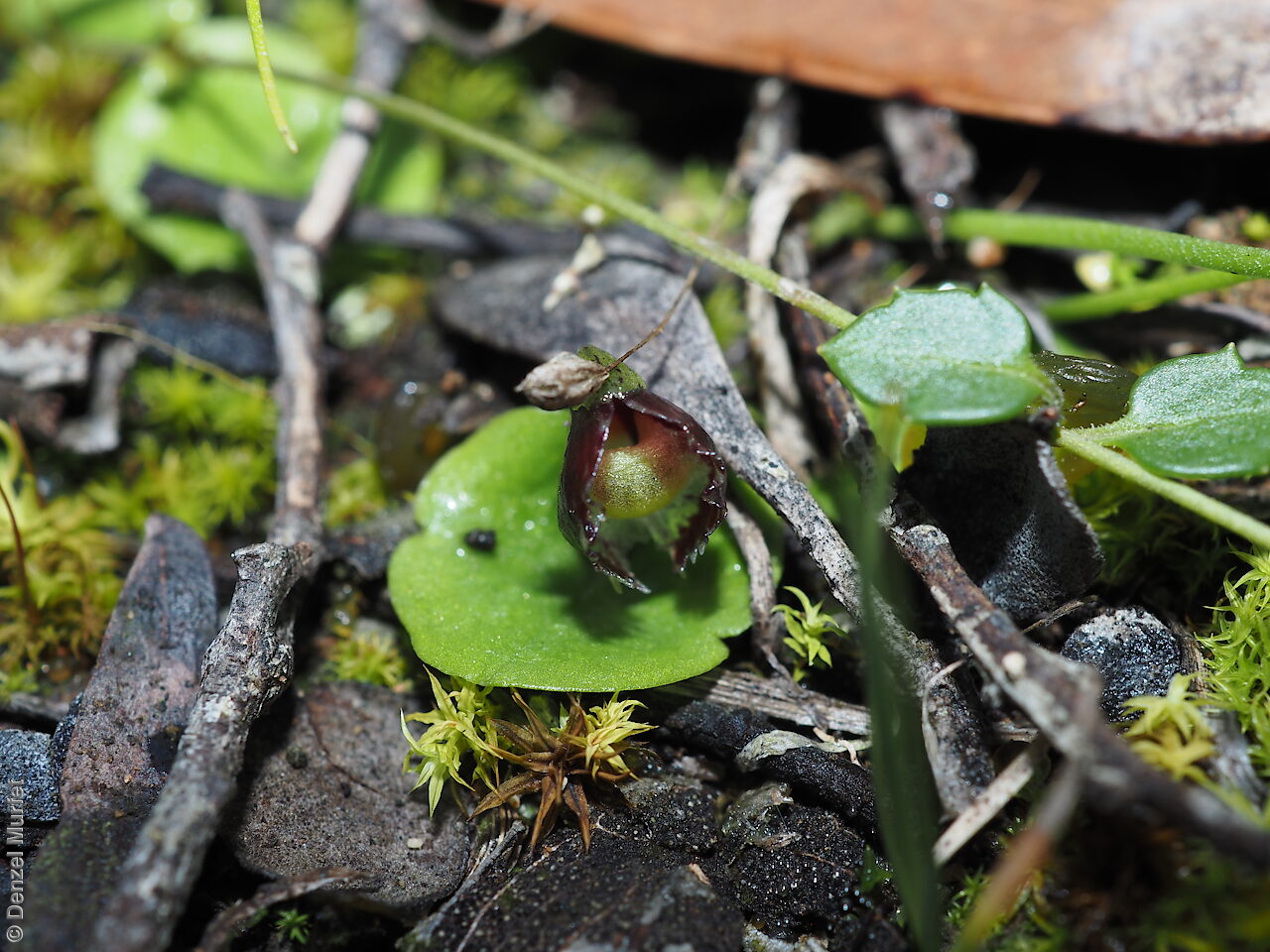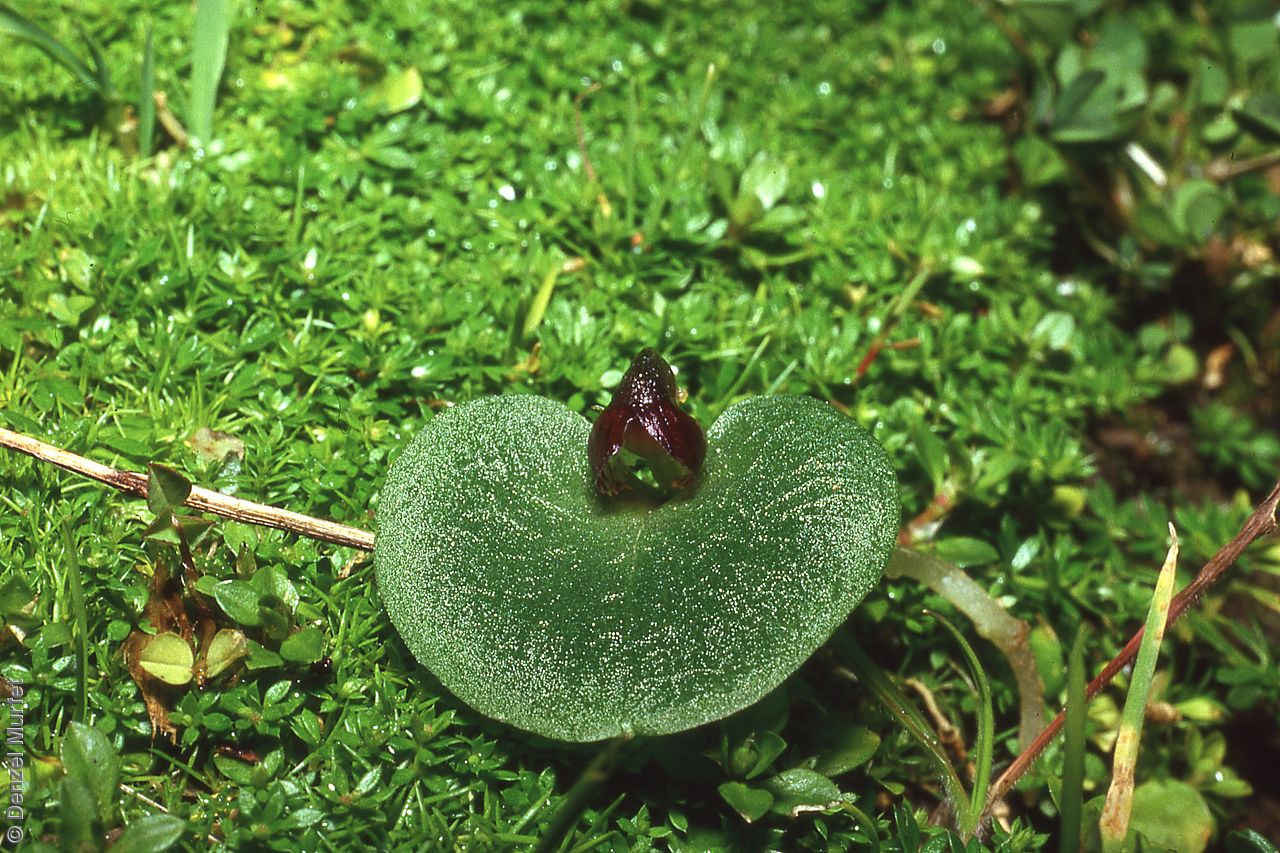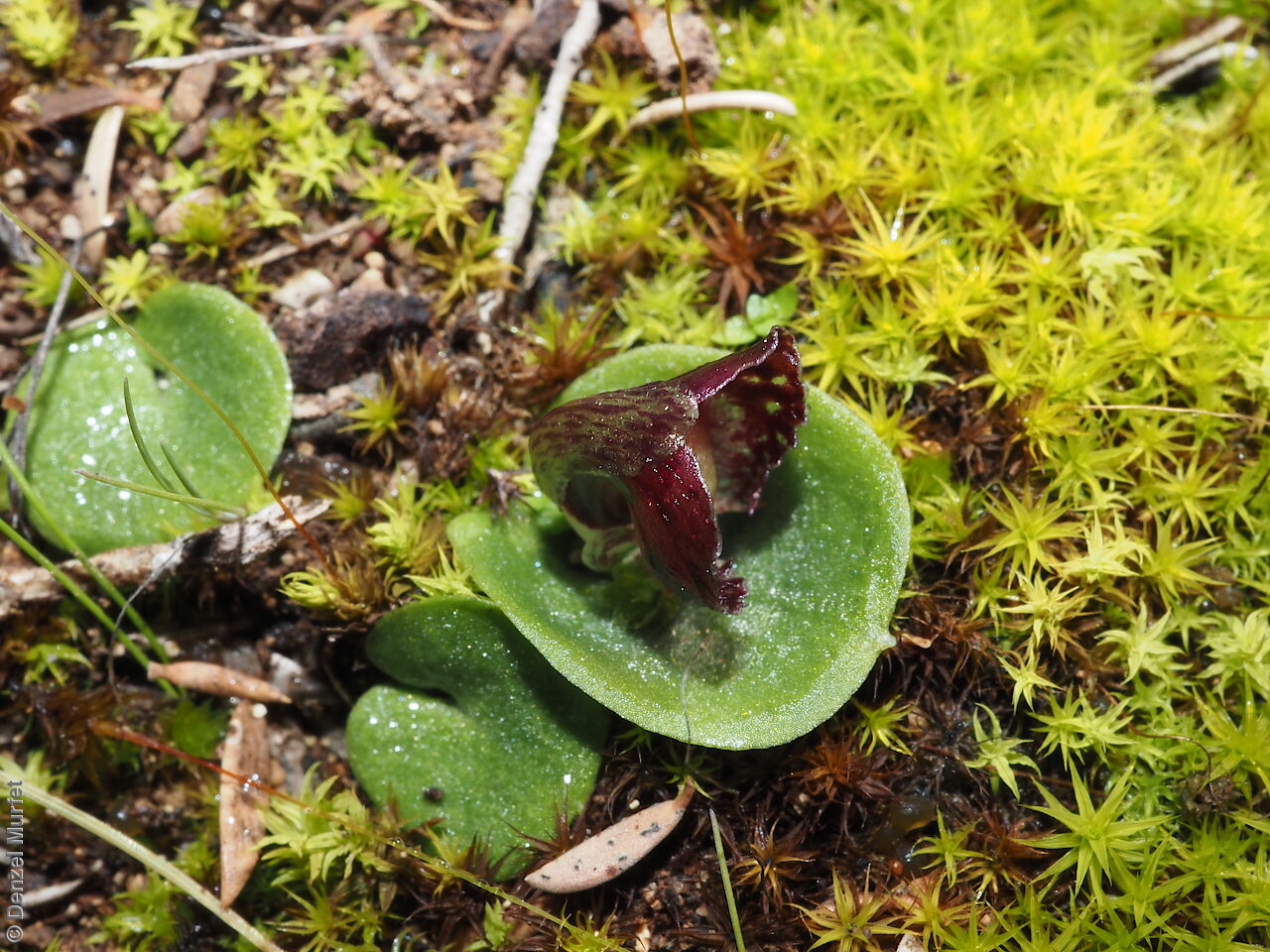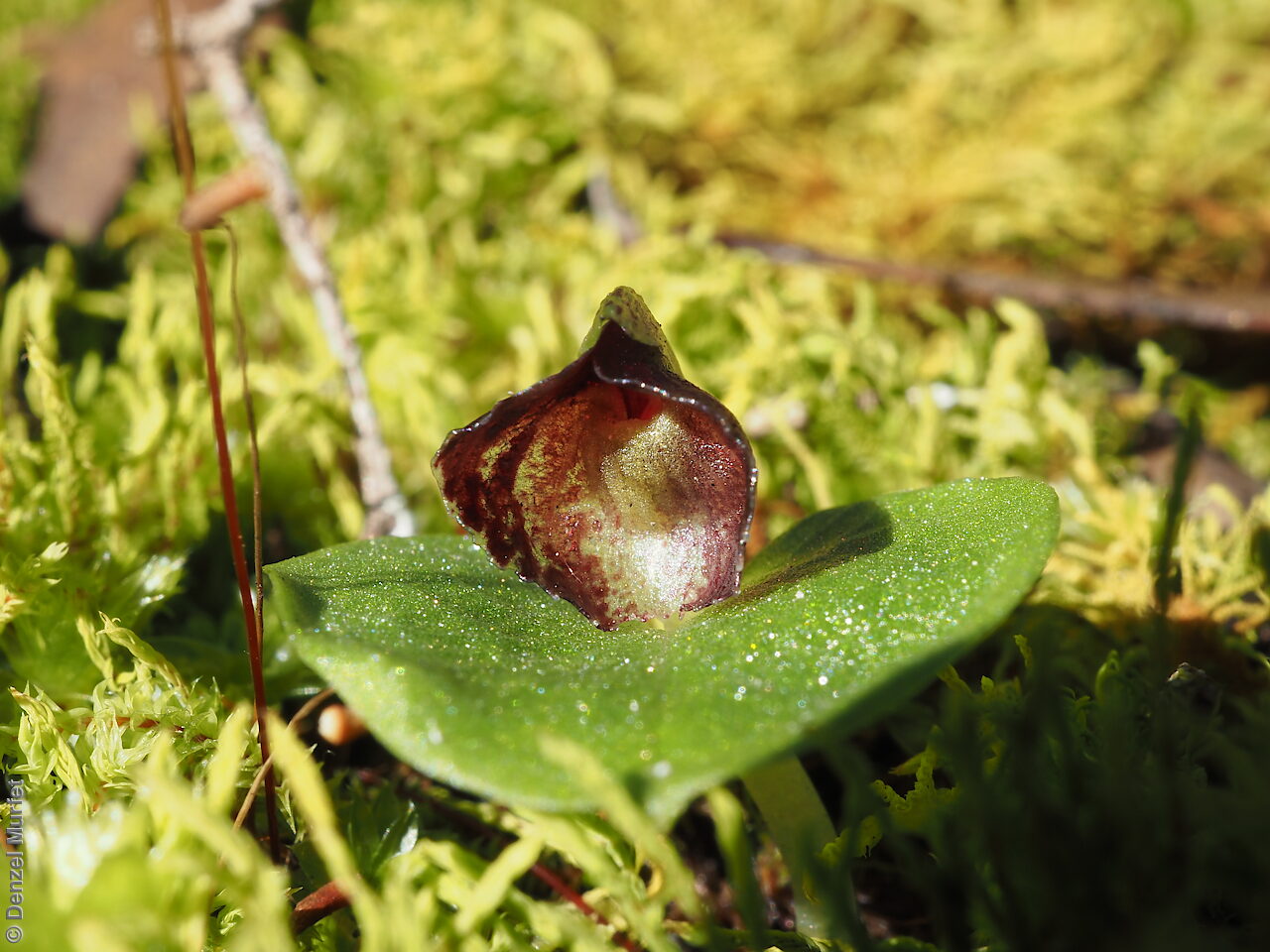



















Botanical art
Prior names
Corysanthes sp. Red-eyed Ghost
Corysanthes despectans
Etymology
Corybas from the Greek 'korybas' one of the dancing priests of the goddess Cybele in Phrygia, or a drunken man, an allusion perhaps to the flower's resemblance to the priest's head-dress, or to the stoop of a drunken man. Despectans from Latin meaning looking down upon, possibly referring to the flower which faces the leaf or alluding to the species being missed until 1976.
Distribution and status
Found on the Yorke Peninsula, Kangaroo Island, southern Mount Lofty Ranges and the South-east in South Australia, growing on limestone or in calcareous sand in forests and scrubland, forming colonies in the shelter of dense shrubby vegetation. Also found in Western Australia and Victoria. Native. Common in South Australia. Rare in Victoria. Common in Western Australia.
Herbarium regions: Eyre Peninsula, Northern Lofty, Yorke Peninsula, Southern Lofty, Kangaroo Island, South Eastern, Green Adelaide
NRM regions: Adelaide and Mount Lofty Ranges, Eyre Peninsula, Kangaroo Island, Northern and Yorke, South East
AVH map: SA distribution map (external link)
Plant description
A terrestrial orchid with a single round or heart-shaped leaf to 25 mm long and 30 mm wide, green on the upper surface and silvery green on the lower side. Flower single erect, reddish purple with green or translucent areas, to 12 mm long. dorsal sepal is greenish grey, erect in the lower part then curves, and does not usually completely cover the labellum. Lateral sepals are about 5 mm long and 1 mm wide and joined at their bases before tapering to a fine tip. Petals are about 2 mm long and 1 mm wide, widest at the base then tapering to a thread-like tip. Labellum is longer than the dorsal sepal and reddish with obvious veins. Flowering between June and August. Fruits are tiny brown papery ellipsoid capsule. Seeds are very small with a long cylindrical translucent brown mesh-like covering.
Seed collection and propagation
Collect seeds between July and September. Collect fat capsules as they start to dry and turn brown. Pods will split and release the seeds quickly and will require monitoring. To increase the chances of collecting mature pods, it is recommended that a small breathable bag (ie. Organza bags) be used to enclose the developing capsules. Place the capsules in a container that will hold fine seeds and leave to dry for a few weeks or until the capsule split. Then carefully hold the capsule and tap it gently to release the seeds. Store the seeds with a desiccant such as dried silica beads or dry rice, in an air tight container in a cool and dry place, a refrigerator or in liquid nitrogen.